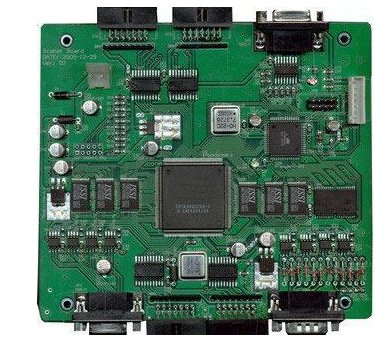Although at present, the changes in PCB surface treatment process are not very big, it seems to be a relatively remote thing, but it should be noted that long-term slow changes will lead to huge changes. With the increasing demand for environmental protection, the surface treatment process of PCB will definitely undergo tremendous changes in the future.
The most basic purpose of surface treatment is to ensure good solderability or electrical properties. Since natural copper tends to exist in the form of oxides in the air, it is unlikely to remain as original copper for a long time, so other treatments are needed for copper. Although in the subsequent assembly, strong flux can be used to remove most of the copper oxides, the strong flux itself is not easy to remove, so the industry generally does not use strong flux.
There are many PCB surface treatment processes, the common ones are hot air leveling, organic coating, electroless nickel/immersion gold, immersion silver and immersion tin, which will be introduced one by one below.
1. Organic Solderability Preservative (OSP)
OSP is a process for surface treatment of printed circuit board (PCB) copper foil that meets the requirements of the RoHS directive. OSP is the abbreviation of Organic Solderability Preservatives, which is translated as Organic Solderability Preservatives in Chinese, also known as Copper Protector, or Preflux in English. Simply put, OSP is to chemically grow a layer of organic film on the clean bare copper surface.
This layer of film has anti-oxidation, thermal shock resistance, and moisture resistance to protect the copper surface from rusting (oxidation or sulfidation, etc.) in a normal environment; but in the subsequent welding high temperature, this kind of protective film must be very It is easy to be quickly removed by the flux, so that the exposed clean copper surface can be immediately combined with the molten solder into a strong solder joint in a very short time.

2. Hot air leveling (spray tin)
Hot air leveling, also known as hot air solder leveling (commonly known as spray tin), is a process of coating molten tin (lead) solder on the surface of the PCB and flattening (blowing) it with heated compressed air to form a layer that is resistant to copper oxidation. It can also provide a coating layer with good solderability. During hot air leveling, the solder and copper form a copper-tin intermetallic compound at the joint. When the PCB is leveled with hot air, it must be submerged in the molten solder; the air knife blows the liquid solder before the solder solidifies; the air knife can minimize the meniscus of the solder on the copper surface and prevent the solder from bridging.
3. The whole plate is plated with nickel and gold
The nickel-gold plating of the board is to plate a layer of nickel and then a layer of gold on the surface of the PCB. The nickel plating is mainly to prevent the diffusion between gold and copper. There are two types of electroplated nickel gold: soft gold plating (pure gold, the gold surface does not look bright) and hard gold plating (the surface is smooth and hard, wear-resistant, contains cobalt and other elements, and the gold surface looks brighter). Soft gold is mainly used for gold wire during chip packaging; hard gold is mainly used for electrical interconnection in non-welded areas.
4. Shen Xi
Since all current solders are based on tin, the tin layer can be matched with any type of solder. The tin sinking process can form a flat copper-tin intermetallic compound. This feature makes the tin sinking have the same good solderability as the hot air leveling without the headache flatness problem of the hot air leveling; the tin plate can not be stored for too long, The assembly must be carried out according to the order of sinking tin.
5. Immersion Silver
The immersion silver process is between organic coating and electroless nickel/immersion gold. The PCB process is relatively simple and fast; even if exposed to heat, humidity and pollution, silver can still maintain good solderability, but it will lose luster. Immersion silver does not have the good physical strength of electroless nickel/immersion gold because there is no nickel under the silver layer.